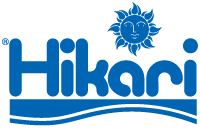One of the first questions new aquatic hobbyists asks is how to properly feed their fish. Knowing how to properly meet your fish’s dietary needs is an important consideration no matter your fish keeping experience. While feeding your fish might seem simple, there are several common mistakes that fish owners should avoid to ensure the health and well-being of their aquatic pets. Read on for some common mistakes an owner might make, and how best to avoid them.
1. Feeding Too Much or Too Little
While more experienced hobbyists might be tempted to overfeed to ensure their fish are not malnourished, an overabundance of food, particularly when not properly disposed of, can cause a host of issues and negative health effects for your fish. Overfeeding can result in many common issues like fatty liver or poor water conditions and make it harder for the equipment in your aquarium set-up to maintain the health and cleanliness of the environment. While underfeeding is less common and harder to realize because most fish can live for weeks or even months if not fed enough, fish keepers should be on the lookout for lethargy, loss of coloration, sunken belly and less and less movement. If any of these are present, serious damage to their health may be underway as a result of malnutrition.
The dietary needs of your fish vary depending on their species, but generally it is recommended to feed your fish twice a day. Smaller more frequent feedings are important for younger fish who would benefit from the increased nutrition required to support optimal growth. While figuring out the unique dietary needs of your fish may take time, at first it is generally preferable to keep in mind that “less is best” and “less more often” can benefit most species.
2. Feeding The Wrong Type of Food
As the originator of the Species Specific™ diets, we have long understood the need for scientifically formulated food options tailored to the unique dietary requirements of the many different species. Many aquarists keep a variety of fish in their aquariums, and because of this a mixture of different types of food can bring positive results. Alternate feedings of meat and plant-based foods can ensure that no matter the species, your fish’s unique dietary needs will be met. Also think about where the fish eat (top feeders, bottom feeders or those that will eat at any aquarium level).
3. Not Disposing of Uneaten Food
A common mistake, especially when feeding your fish more than they need, is improper disposal of uneaten food. Food that is left in an aquarium can quickly decay and rot, causing a multitude of issues and disrupting the balance of the water. Overfeeding or using the wrong pellet size (again smaller is always better because it allows more surface area of the food to be exposed to the fish’s digestive enzymes) can also lead your fish to produce more waste than normal, further hampering the cleanliness of their environment.
A good rule of thumb when assessing how much your fish eat is to see how much they consume in a minute, two minutes max. If it takes them longer than this to consume the food you have provided or they do not aggressively go after the food, you are probably overfeeding them. By remaining cognizant of the amount of food your fish need and disposing of any leftovers, you can ensure they have a beautiful and clean aquarium. This is one of the reasons we prefer pellets over flake. Pellets are much easier to monitor what is being eaten and you can more readily manage portion size.
We’re happy to help with any feeding questions you may have! Email us at fish@hikariusa.com and one of our expert team members can assist in meeting your needs.

